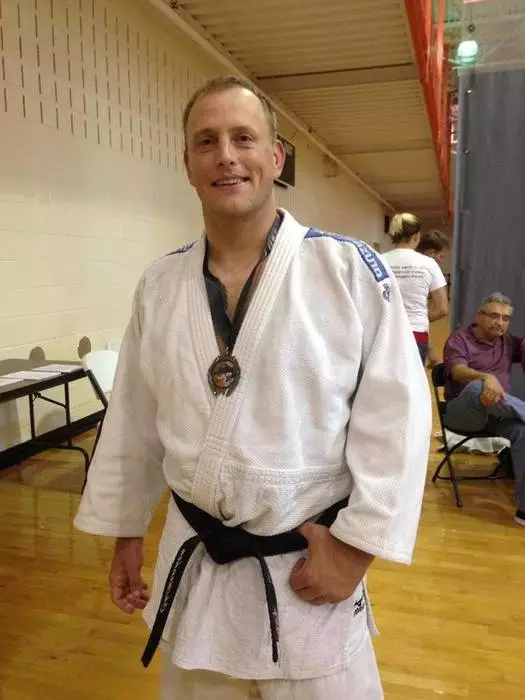
Applying Seiryoku Zenyo to Everyday Life
Seiryoku Zenyo is a foundational principle of Judo that translates to the "maximum efficient use of energy." It was one of the core tenets established by Dr. Jigoro Kano, the founder of Judo. Kano envisioned Judo not merely as a martial art but as an educational system—a philosophy influenced deeply by Confucian ideals. The essence of Seiryoku Zenyo lies in efficiency: achieving a goal effectively without wasting time, energy, or resources. While it originated in the dojo, this principle extends far beyond martial arts. Its application to our daily lives, work, and even relationships can lead to profound improvements in how we function and interact.
Seiryoku Zenyo in Brazilian Jiu-Jitsu
Brazilian Jiu-Jitsu (BJJ) owes much of its foundation to Judo, so it’s no surprise that Seiryoku Zenyo fits seamlessly into its practice. In BJJ, efficiency can be the difference between success and failure, especially since the art emphasizes technique over brute strength. When applying Seiryoku Zenyo to BJJ, practitioners focus on the most effective paths to their goals, whether it’s passing an opponent’s guard, executing a sweep, or finishing a submission.
Take guard passing as an example. Rather than wasting energy by bouncing back and forth or attempting to brute-force your way past your opponent’s legs, efficiency calls for creating angles, applying pressure deliberately, and using precise movements. The goal is to pass the guard with minimal effort while preventing your opponent from regaining their position. Success can be measured by how quickly you pass, how much energy you conserve, and how effectively you maintain control.
Seiryoku Zenyo encourages practitioners to analyze their techniques and refine them. Are there unnecessary movements? Could an adjustment in timing or positioning yield better results? By continuously evaluating and improving efficiency, practitioners not only become better at Jiu-Jitsu but also develop problem-solving skills that translate to other areas of life.
Seiryoku Zenyo at Work
In the workplace, the principle of maximum efficient use of energy is especially relevant. Whether managing a team, completing a project, or navigating daily tasks, embracing efficiency leads to better outcomes with fewer resources.
For instance, consider a complex project with tight deadlines. Applying Seiryoku Zenyo might involve:
Prioritizing Resources: Identifying the most critical tasks and allocating your team’s time and energy accordingly.
Streamlining Processes: Eliminating redundant steps and embracing automation where possible to save time.
Tracking Performance: Using measurable benchmarks to gauge progress and adjust efforts to stay on track.
By focusing on efficient workflows, you can complete projects faster, reduce stress, and optimize your team’s potential. Efficiency in the workplace also fosters creativity—when less time is spent on repetitive or unnecessary tasks, more energy is available for innovation and problem-solving.
Seiryoku Zenyo at Home
The principle of efficiency doesn’t just apply to the mat or the office; it’s equally valuable at home. Everyday tasks, like fixing something around the house, can benefit greatly from a thoughtful, efficient approach.
Imagine repairing a leaky faucet. Instead of rushing into the task without preparation, an efficient approach would involve diagnosing the issue, gathering the necessary tools, and following clear steps to resolve the problem. This saves both time and frustration, ensuring the repair is done correctly the first time (I use this example because I really hate doing plumbing work).
Efficiency at home extends beyond repairs. It’s about finding better ways to manage household chores, plan meals, or even spend quality time with loved ones. When we prioritize doing things well without unnecessary effort, we create more time for relaxation, recreation, and more time to spend with your family.
Measuring Efficiency in Everyday Life
Applying Seiryoku Zenyo to every aspect of life can significantly reduce waste—whether it’s time, energy, or resources. Measuring efficiency doesn’t have to be complicated. A simple way is to evaluate the ratio of output to input. For example:
At work: How much progress was made on a project compared to the time and energy invested?
At home: Did completing a chore or task take less time or effort than before?
In martial arts: Did a technique require fewer steps or less physical exertion to achieve the same result?
These measures can highlight areas for improvement, giving insights into where adjustments might make life smoother. Over time, these incremental changes can lead to transformative results.
The Broader Applications of Seiryoku Zenyo
At its core, Seiryoku Zenyo is about awarenss. It encourages us to be intentional with our actions and to seek balance. By striving for efficiency, we not only achieve our goals more effectively but also conserve energy for the things that matter most. Whether you’re on the mat, at work, or spending time with loved ones, this principle reminds us to focus on quality over quantity to achieve positive results.
Dr. Jigoro Kano’s vision for Judo as an educational system resonates deeply in this context. He believed that the principles of Judo could shape individuals into better, more thoughtful members of society. By adopting Seiryoku Zenyo, we contribute to this vision, not just for ourselves but for those around us.
Incorporating this principle into daily life doesn’t happen overnight. It requires practice, self-reflection, and a willingness to adapt. But the rewards—greater productivity, reduced stress, and a deeper sense of fulfillment—are well worth the effort. So, whether you’re rolling on the mat, tackling a work project, or repairing that leaky faucet, remember to strive for efficiency. Seiryoku Zenyo isn’t just a principle for martial artists; it’s a guide for living a more intentional and productive life.
